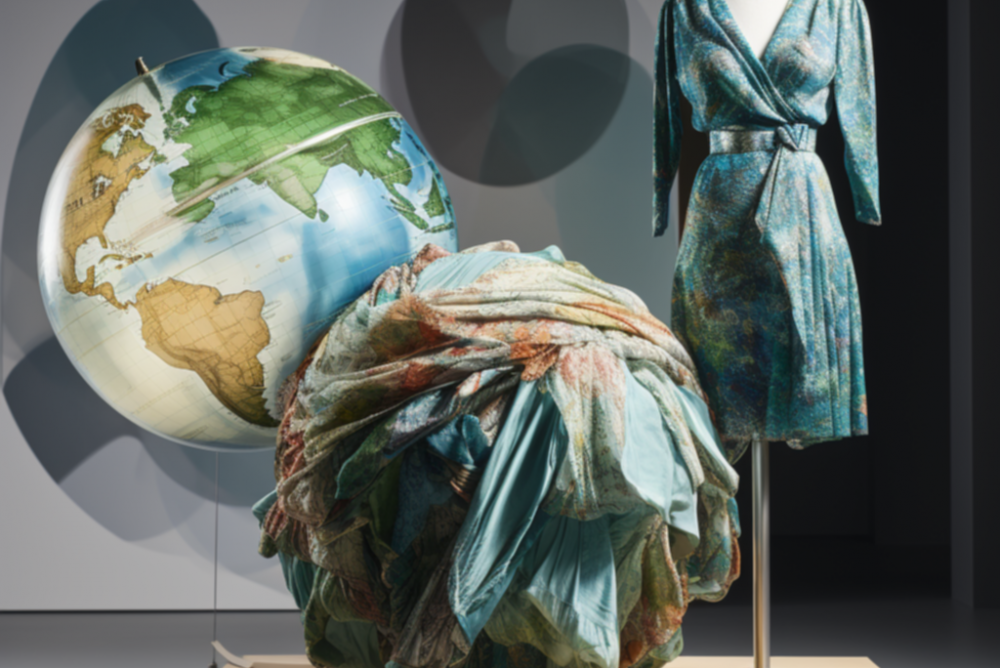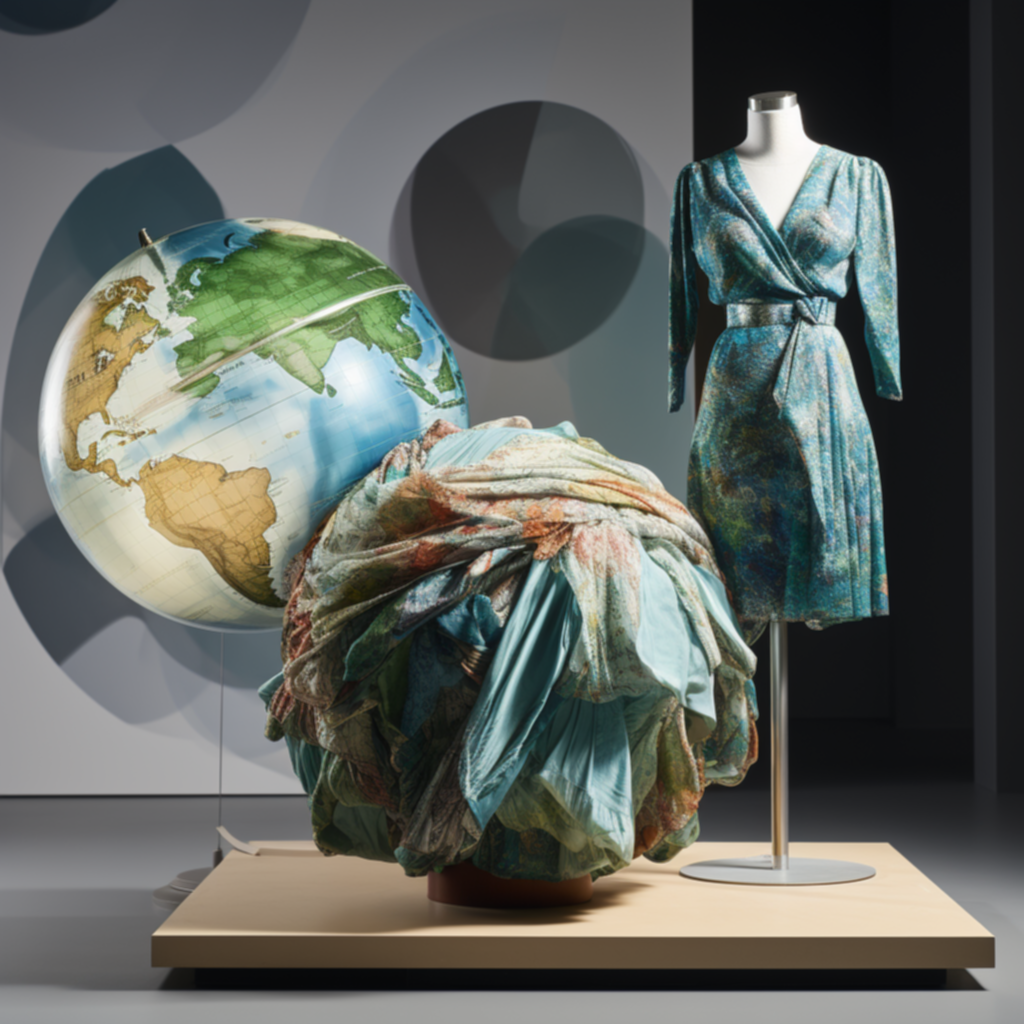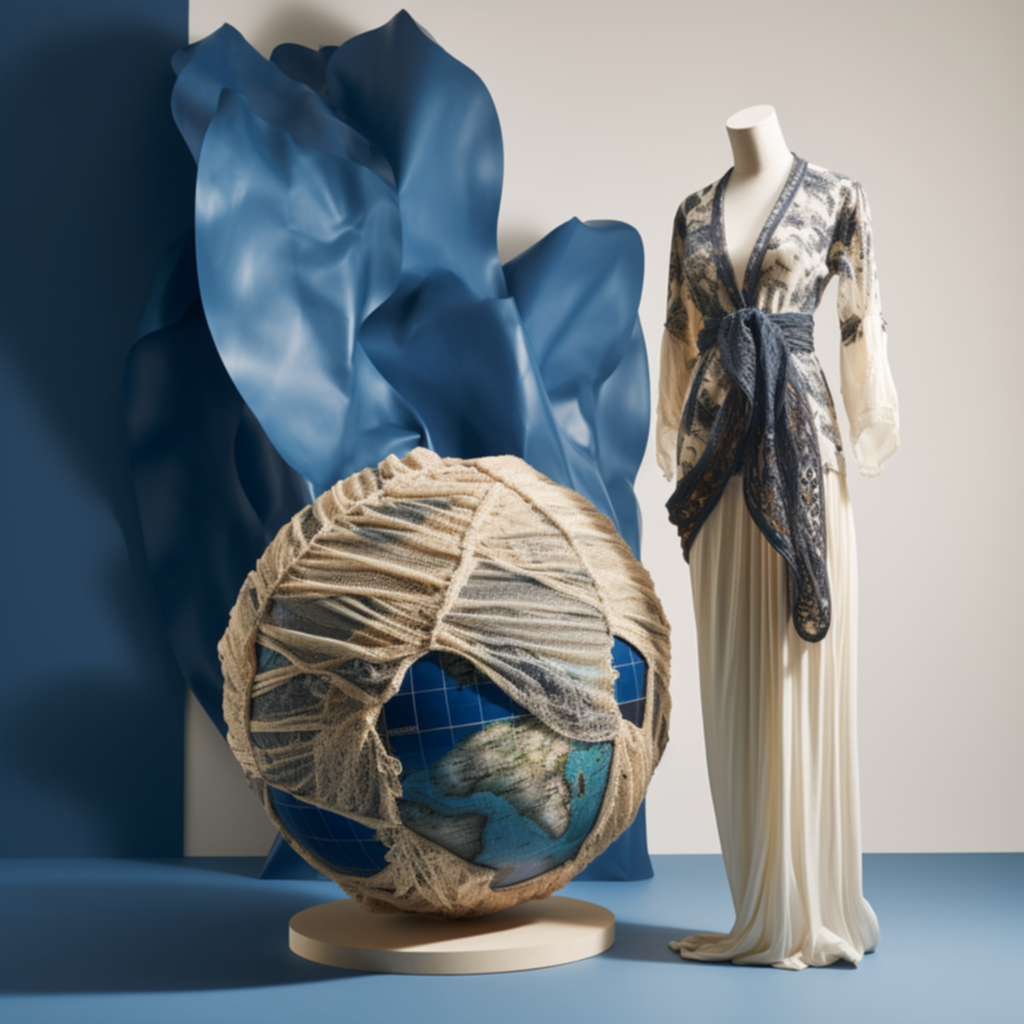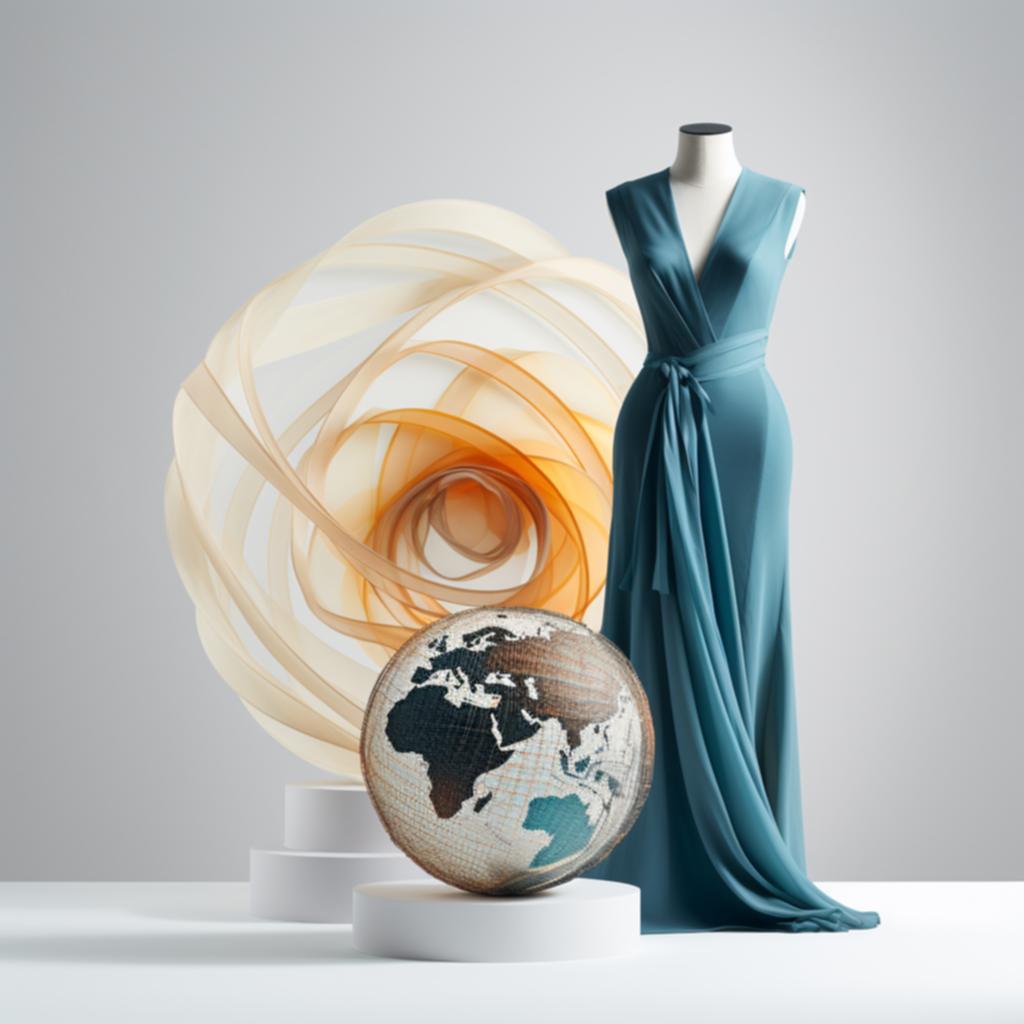Building a Future-Proof Sustainable Fashion Business


In today's fast-paced world, where consumerism reigns supreme and the cycle of buying and discarding has become a daily ritual, a rising tide of consciousness is slowly but steadily changing the landscape of the fashion industry. Enter the realm of sustainable fashion – a thoughtful and forward-looking approach to designing, manufacturing, and distributing clothing.
But what exactly is sustainable fashion, and why is it becoming the talk of the town? At its core, sustainable fashion is a movement advocating for the production of clothing in ways that prioritize ecological integrity and social justice. This means clothes that don’t cost the earth, and more importantly, don’t exploit its inhabitants.
In this guide, we aim to dive deep into the world of sustainable fashion, breaking down its importance, its challenges, and the strategies entrepreneurs can adopt to establish a successful sustainable clothing business. From understanding market trends and sourcing ethical materials to leveraging modern marketing techniques and learning from industry leaders, we will cover it all.
It’s crucial to remember that the journey towards building a sustainable fashion brand isn’t just a business opportunity; it's an opportunity to be part of a global solution.
2: Understanding Sustainable Fashion
The heart of sustainable fashion lies not just in eco-friendly materials, but in a holistic approach that encompasses social, economic, and environmental facets. To build a sustainable fashion brand, understanding these dimensions is imperative.
2.1. Environmental Sustainability:
Materials: Traditional fashion relies heavily on non-renewable resources. Sustainable brands opt for organic fibers, recycled materials, and non-toxic dyes, minimizing their ecological footprint.
Water Consumption: Producing one cotton shirt can consume up to 2,700 liters of water1. Sustainable brands employ water-efficient methods and closed-loop systems, ensuring reduced wastage.
Waste Management: Rather than the throwaway culture of fast fashion, sustainable brands encourage recycling, upcycling, and longer-lasting designs.
2.2. Social Sustainability:
Fair Labor: Adhering to international labor standards, sustainable brands ensure fair wages, humane working conditions, and no child or forced labor.
Community Engagement: Many brands collaborate with local artisans, preserving indigenous art forms and ensuring community upliftment.
2.3. Economic Sustainability:
Fair Pricing: While sustainable clothing may sometimes have a higher upfront cost, they last longer and provide a better value for money in the long run.
Supporting Local Economies: By sourcing locally and involving regional craftsmen, sustainable brands bolster local economies.
2.4. Ethical Aspects:
Cruelty-free: Avoiding animal products or ensuring humane treatment of animals, such as not using fur or leather from animals killed for fashion.
Transparency: An ethical brand will often publicize its production processes, supply chains, and labor practices to maintain consumer trust.
Understanding the multi-dimensional nature of sustainable fashion is the first step in establishing an authentic and valued brand in the industry. Entrepreneurs should keep these considerations at the forefront of their business model.
3: Market Analysis and Trends in Sustainable Fashion
For any budding entrepreneur, understanding the market is key. The sustainable fashion industry is growing at an unprecedented rate, and familiarizing oneself with current trends and analyses can set the foundation for a successful venture.
3.1. Growth Trajectory:
The global sustainable apparel market is projected to reach a staggering value in the next decade, with a CAGR (Compound Annual Growth Rate) that surpasses traditional fashion sectors1. This growth stems from increased consumer awareness and a collective shift towards responsible buying.
3.2. Consumer Demographics:
Millennials and Gen Z: These age groups, characterized by their tech-savviness and social responsibility, are leading the sustainable fashion revolution. They are willing to spend more on brands that echo their values.
Affluent Consumers: The appeal of sustainable fashion isn’t limited to younger consumers. Affluent individuals are also showing a keen interest, viewing sustainable purchases as a status symbol.
3.3. Key Market Trends:
Upcycling: A method where old items or materials are transformed into new products. Brands are integrating upcycling into their collections, reducing waste and offering unique products.
Technology Integration: From AR try-ons to AI-driven sustainable material sourcing, tech plays a pivotal role in modern sustainable fashion.
Subscription and Rental Models: The idea is to reduce excessive buying. Brands are offering rental services or subscription boxes, ensuring consumers get fresh fashion without the clutter.
3.4. Regional Insights:
North America & Europe: These regions are pioneers in sustainable fashion, driven by consumer awareness, governmental regulations, and brand initiatives.
Asia-Pacific: With fast-growing economies, there’s a surge in sustainable fashion. Countries like India and Bangladesh are integrating sustainability into their historically rich textile industries.
South America & Africa: Slowly catching up, these regions offer a rich pool of sustainable materials and artisanal techniques, making them potential gold mines for sustainable fashion.
3.5. Challenges:
Despite the growth, challenges like greenwashing (false claims of being sustainable), lack of standardized sustainable certifications, and higher production costs exist. Brands must navigate these to establish authenticity.
4: Sourcing Sustainable Materials
One of the cornerstones of a sustainable fashion business is the sourcing of materials. The choices made at this stage have wide-reaching implications, not only for the environment but also for the overall ethos and authenticity of your brand.
4.1. Natural Fibers:
Organic Cotton: Unlike conventional cotton, organic cotton is grown without synthetic pesticides and GMOs, ensuring a cleaner and safer crop1. It's softer, durable, and has less impact on the environment.
Hemp: One of the oldest known fibers, hemp requires minimal water and pesticides. It's strong, breathable, and biodegradable.
Silk and Wool: When sourced ethically, these can be sustainable choices. Look for cruelty-free and organic certifications.
4.2. Regenerated and Recycled Fibers:
Tencel/Lyocell: Derived from sustainable wood sources, Tencel is biodegradable and produced in a closed-loop process, minimizing environmental damage.
Recycled Polyester: Made from recycled plastic bottles, this material gives a second life to plastic waste.
4.3. Alternative Sustainable Materials:
Piñatex: Made from pineapple leaf fibers, it's an eco-friendly alternative to leather.
Mycelium Leather: Crafted from fungal mycelium, this material is a sustainable, biodegradable replacement for traditional leather.
4.4. Certifications to Trust:
GOTS (Global Organic Textile Standard): One of the leading standards for organic textiles. It ensures ecological and social criteria.
OEKO-TEX: Focuses on harmful substances in textiles. An OEKO-TEX certification ensures that the fabric is safe for human health.
Cradle to Cradle: Emphasizes products designed for the circular economy, ensuring they're safe and beneficial for people and the environment.
4.5. Sourcing Challenges and Solutions:
Scalability: As demand grows, maintaining consistent sustainable sourcing can be challenging. Collaborating with trusted suppliers and diversifying sources can help.
Cost Implications: Sustainable materials might have higher upfront costs. However, consumer willingness to pay a premium for ethical products can offset these costs.
5: Ethical Manufacturing and Labor Practices
Ethical considerations in the fashion industry extend beyond materials. How products are made, and by whom, hold equal weight. A true sustainable fashion brand prioritizes the wellbeing of every hand that contributes to its creations.
5.1. The Importance of Fair Labor:
Human Rights: Every worker deserves a safe working environment, fair wages, reasonable hours, and the right to collective bargaining. Respecting these rights is non-negotiable.
Brand Image: In the age of information, consumers are well-informed. Brands associated with labor exploitation face backlash and potential revenue losses.
5.2. Steps to Ensure Ethical Manufacturing:
Factory Audits: Regular inspections of manufacturing units can ensure they meet the brand's ethical and quality standards.
Direct Relationships: Instead of relying on middlemen, brands can establish direct relationships with factories, ensuring transparency and adherence to ethical practices.
Third-party Certifications: Certifications like Fair Trade and SA8000 signify that products are made under ethical labor conditions.
5.3. Encouraging Artisanal Collaborations:
Many regions around the world have rich artisanal traditions. Collaborating with these artisans not only ensures unique, high-quality products but also helps in preserving these crafts and providing communities with a stable income source.
5.4. Addressing the Issue of Overproduction:
Made-to-Order: Instead of producing massive quantities, brands can opt for a made-to-order model, reducing waste and ensuring every product has a destined owner.
Slow Fashion: Encouraging consumers to buy timeless pieces that last, rather than fleeting trends, reduces the pressure on rapid production cycles.
5.5. Challenges and Solutions:
Supply Chain Complexity: The longer the supply chain, the harder it is to monitor. Brands can opt for localized sourcing and manufacturing to simplify the chain and ensure oversight.
Cost Implications: Ethical practices might imply higher costs. However, as with sustainable materials, consumers often appreciate the value of ethically-made products and are willing to pay a premium.
6: Marketing Strategies for Sustainable Fashion Brands
In the competitive world of fashion, having a sustainable and ethical foundation is a commendable first step. But to truly make an impact and thrive, effective marketing strategies tailored for the sustainable niche are essential.
6.1. Storytelling and Transparency:
Brand Narrative: Share your brand's journey, ethos, and vision. Let consumers know the "why" behind your brand's sustainable commitment.
Openness: Being transparent about your supply chain, sourcing, and manufacturing can build trust. If there's room for improvement, acknowledge it and share your plans for change.
6.2. Leveraging Digital Platforms:
Social Media: Platforms like Instagram and Pinterest are visual-centric, making them ideal for fashion brands. Share behind-the-scenes content, artisan stories, and the impact of sustainable choices.
Content Marketing: Blogs, videos, and podcasts can educate consumers about sustainable fashion, reinforcing your brand's position as a thought leader in the niche.
6.3. Collaborations and Partnerships:
Influencer Collaborations: Partnering with eco-conscious influencers can help reach a wider, yet targeted, audience.
Brand Collaborations: Collaborate with other sustainable brands or organizations. Joint ventures or capsule collections can amplify the reach and message.
6.4. Sustainable Packaging and Presentation:
First impressions count. Eco-friendly packaging that's recyclable or reusable not only reduces environmental impact but also strengthens your brand's sustainable image.
6.5. Engage with the Community:
Workshops and Events: Organizing events around sustainable fashion, be it DIY upcycling workshops or discussions on sustainable practices, can boost brand engagement.
Feedback Loop: Encourage feedback from your consumers. It's a great way to build a loyal community and continually refine your offerings.
6.6. Challenges and Solutions:
Over Saturation: With many brands jumping on the sustainability bandwagon, the market can feel saturated. A genuine commitment to sustainability combined with unique brand positioning can help stand out.
Greenwashing Accusations: Being transparent and continually striving for genuine improvements will ensure your brand remains authentic and avoids accusations of superficial commitment.
7: Building Customer Loyalty in Sustainable Fashion
Sustainability in the fashion industry isn't just a trend—it's a movement. To ensure longevity and growth, it's paramount for brands to foster a loyal customer base. This chapter delves into how brands can achieve this.
7.1. Quality Over Quantity:
Durability: Offer products that last. When consumers invest in sustainable fashion, they seek value through longevity.
Timeless Design: Avoid fleeting trends. Instead, focus on timeless pieces that can be worn year after year.
7.2. Educate and Empower:
Workshops: Host events where customers can learn about sustainable practices, upcycling techniques, or even the art of mending.
Resourceful Content: Share blogs, videos, or infographics that educate on topics like the environmental impact of fast fashion or how to care for sustainable fabrics.
7.3. Reward Sustainability:
Loyalty Programs: Offer rewards for actions that support sustainability, like recycling old garments, referring eco-conscious friends, or buying from sustainable collections.
Discounts: Provide discounts for customers who return packaging or bring their own bags.
7.4. Transparent Communication:
Feedback Channels: Allow customers to voice concerns, ask questions, and give feedback. Engage with them actively.
Progress Updates: Share updates on your brand's journey towards increased sustainability, acknowledging achievements and areas for improvement.
7.5. Inclusive Sizing and Representation:
Broaden Size Range: Sustainable fashion should be for everyone. Ensure you cater to a diverse size range.
Inclusive Marketing: Represent a diverse set of individuals in your marketing campaigns, making everyone feel seen and valued.
7.6. Personalized Customer Experience:
Customization: Offer options for personal touches, be it embroidery, colors, or even style modifications.
Personal Interactions: Engage with customers personally, understanding their needs, preferences, and feedback.
7.7. Challenges and Solutions:
Higher Price Points: Sustainable products often come with a heftier price tag. Highlight the long-term value, durability, and positive environmental impact to justify the costs.
Supply Chain Delays: Using sustainable materials and ethical manufacturing can sometimes lead to longer delivery times. Communicate transparently with customers, explaining the reasons and benefits behind the wait.
8: The Future of Sustainable Fashion: Trends to Watch
The sustainable fashion landscape is ever-evolving. As technological advancements merge with increased awareness, the sector is set to undergo transformative changes. Here's a look at upcoming trends and how they might shape the industry.
8.1. Circular Fashion Economy:
Concept: Moving away from the traditional 'take, make, dispose' model, a circular economy focuses on minimizing waste and maximizing resources. Fashion items are designed to be recycled or reused at the end of their life.
Implementation: Brands can offer recycling programs, design modular clothing that can be updated or changed, and use materials designed for easy recycling or composting.
8.2. Tech-Infused Sustainability:
Smart Fabrics: Innovations like fabrics that can adapt to temperatures or self-clean, reducing the frequency of washes.
Blockchain for Transparency: Using blockchain technology, brands can offer transparency in their supply chains, allowing customers to track a product's journey from raw material to finished garment.
8.3. Biofabrication and Lab-grown Materials:
Concept: Moving beyond plant-based materials, the industry is looking at lab-grown options, like leather made from mushroom mycelium or spider silk produced by yeast.
Benefits: This method ensures a consistent supply, requires less land and resources, and can be tailored for specific properties.
8.4. Renting and Resale Boom:
Resale Platforms: With platforms like Depop and The RealReal gaining traction, there's a shift towards buying pre-loved items, increasing the lifespan of garments.
Fashion Rental: Renting outfits, especially for occasions, reduces the need for one-time-wear items, minimizing waste.
8.5. Hyper-Local Production:
Concept: Producing products closer to where they're sold reduces carbon emissions from transportation.
Benefits: Faster turnaround times, easier quality control, and supporting local economies.
8.6. Augmented Reality (AR) Try-Ons:
Digital Fittings: AR can allow customers to 'try on' clothes virtually, helping them make better purchasing decisions and reducing returns.
Personalization: Based on virtual try-ons, brands can offer custom fits or styles tailored to individual preferences.
8.7. Challenges and Solutions:
Tech Integration Costs: Incorporating advanced technologies can be expensive. Brands can consider partnerships, grants, or shared platforms to offset initial costs.
Consumer Adaptability: With newer models like renting or digital try-ons, there might be resistance. Educative campaigns, trials, and incentives can help in easing consumers into these shifts.
9: Overcoming Challenges in Sustainable Fashion
No journey is without its hurdles, and the sustainable fashion path is no exception. This chapter will shed light on common challenges faced by brands and offer insights on overcoming them.
9.1. Balancing Cost and Sustainability:
Challenge: Eco-friendly materials and ethical manufacturing often come at a higher cost, which can impact pricing and profitability.
Solutions: Brands can explore bulk purchasing, partnerships, or grants focused on sustainability. Over time, as consumer demand for sustainable goods rises, economies of scale can make processes more affordable.
9.2. Supply Chain Complexity:
Challenge: Ensuring transparency and ethical practices across a long and multifaceted supply chain can be daunting.
Solutions: Simplify by sourcing and manufacturing locally. Use tech tools like blockchain for transparency. Engage in direct relationships with suppliers rather than relying on middlemen.
9.3. Greenwashing Accusations:
Challenge: As sustainability becomes a buzzword, brands are scrutinized for authenticity in their claims.
Solutions: Prioritize transparency in every operation. Regularly update stakeholders on sustainability goals, achievements, and areas of improvement.
9.4. Keeping Up with Rapid Innovations:
Challenge: The sustainable fashion landscape is rapidly evolving, making it challenging for brands to stay updated.
Solutions: Invest in continuous learning. Attend industry conferences, collaborate with research institutions, and hire experts in the field.
9.5. Educating the Consumer:
Challenge: While awareness about sustainable fashion is growing, there's still a large consumer base that needs education.
Solutions: Engage consumers with informative content. Host workshops, publish articles, and leverage social media to discuss the importance and benefits of sustainable fashion.
9.6. Navigating Regulatory Changes:
Challenge: As sustainability gains momentum, governments might introduce new regulations that brands need to adhere to.
Solutions: Stay informed about potential regulatory changes in the fashion industry. Consider having a dedicated team or consultant to ensure compliance.
9.7. Challenges and Solutions:
Shifting Mindsets: For long-term industry players, moving from a traditional fashion model to a sustainable one requires a significant mindset shift.
Solution: Continuous training, hiring experts in sustainable fashion, and immersing oneself in the sustainable fashion community can help align the brand with the new paradigm.
10: Preparing for the Future: Steps Forward for Brands
The journey towards sustainable fashion is ongoing. Brands must be prepared to adapt, innovate, and lead. Here are proactive steps to ensure a brand not only survives but thrives in this evolving landscape.
10.1. Continuous Learning:
Importance: With advancements in materials, technology, and consumer behavior, staying updated is crucial.
Approach: Engage in webinars, workshops, and courses focused on sustainable fashion trends and innovations.
10.2. Collaborative Efforts:
Importance: Achieving sustainability is a collective effort. Brands can accomplish more by working together.
Approach: Form partnerships, join sustainable fashion consortiums, and collaborate on research and development projects.
10.3. Consumer-Centric Approach:
Importance: Consumers drive demand. Understanding their evolving preferences ensures brand relevance.
Approach: Regularly gather feedback, conduct surveys, and engage in dialogue with consumers.
10.4. Agility in Operations:
Importance: The ability to quickly adapt to changes sets brands apart.
Approach: Streamline operations, employ agile methodologies, and foster a culture of adaptability within the organization.
10.5. Forward-Thinking Investments:
Importance: The tools and technologies of tomorrow require investments today.
Approach: Dedicate a portion of revenue towards research, technological upgrades, and innovations that align with sustainability.
Conclusion: Crafting a Green Legacy in Fashion
The fashion industry, historically characterized by its rapid cycles and consumerism, is on the cusp of a transformation. Brands and consumers alike are recognizing the urgent need for change, driven by environmental concerns, ethical considerations, and an evolving consumer mindset. As the industry pivots, the journey won't always be straightforward. Challenges will arise, but so will innovations, solutions, and unprecedented opportunities.
For businesses, the path to sustainability isn't just a strategic move—it's a moral imperative. Building a sustainable fashion clothing business demands a blend of tradition and innovation, old wisdom and new technologies, passion, and pragmatism. But the rewards, both tangible and intangible, are profound. Beyond profits, brands have the chance to craft legacies, positively impacting the world and setting benchmarks for others to follow.
The road ahead is long, but the destination—a world where fashion thrives without compromising the planet or its inhabitants—is worth every effort.
Brands ready to embark on this journey will not only find success in the marketplace but also the gratification of knowing they played a part in making the world a better place, one garment at a time.
FAQs
1. What is sustainable fashion?
Sustainable fashion refers to practices that promote better environmental, ethical, and social standards throughout the fashion lifecycle—from material sourcing to production, retail, and disposal.
2. Why is sustainability crucial in the fashion industry?
The fashion industry is among the top polluters worldwide. Sustainability aims to reduce its environmental footprint, ensure fair labor practices, and meet evolving consumer demands for ethical products.
3. How can I ensure my materials are sustainable?
Opt for organic, recycled, or upcycled fabrics. Establish direct relationships with suppliers, demand certifications, and consider using third-party services to verify material origins and sustainability claims.
4. Isn't sustainable fashion more expensive?
Initially, yes. Eco-friendly materials and ethical manufacturing often cost more. However, long-term benefits like customer loyalty, brand reputation, and reduced waste can offset these costs. Additionally, as demand grows, many sustainable practices will become more affordable.
5. How can I educate my consumers about my brand's sustainable practices?
Use transparent marketing strategies. Share behind-the-scenes looks into your production processes, offer information on materials used, and highlight collaborations or certifications that validate your sustainability claims.
6. How can I avoid 'greenwashing'?
Greenwashing is making false claims about the environmental benefits of a product. Avoid it by being transparent, making genuine efforts towards sustainability, and avoiding exaggerations or unsubstantiated claims.
7. Can I transform my existing fashion business into a sustainable one?
Absolutely! Begin by assessing your current practices, identifying areas for improvement, and making gradual changes—like sourcing sustainable materials or adopting ethical labor practices.
8. What is a 'circular fashion economy'?
It's an alternative to the traditional linear model ('take, make, dispose'). In a circular fashion economy, products are designed for longevity, reuse, and recycling, minimizing waste and maximizing resource utilization.
9. How can technology aid in sustainable fashion?
Technology offers solutions like blockchain for supply chain transparency, smart fabrics for durability and adaptability, and biofabrication for sustainable material production.
10. Is sustainable fashion just a trend?
No, it's a movement and a necessary shift for the industry. With growing awareness of environmental issues and ethical concerns, sustainable fashion is becoming the norm, not an exception.





-500x500.jpg)
-500x500.jpg)
-500x500.jpg)
-500x500.jpg)
-500x500.jpg)